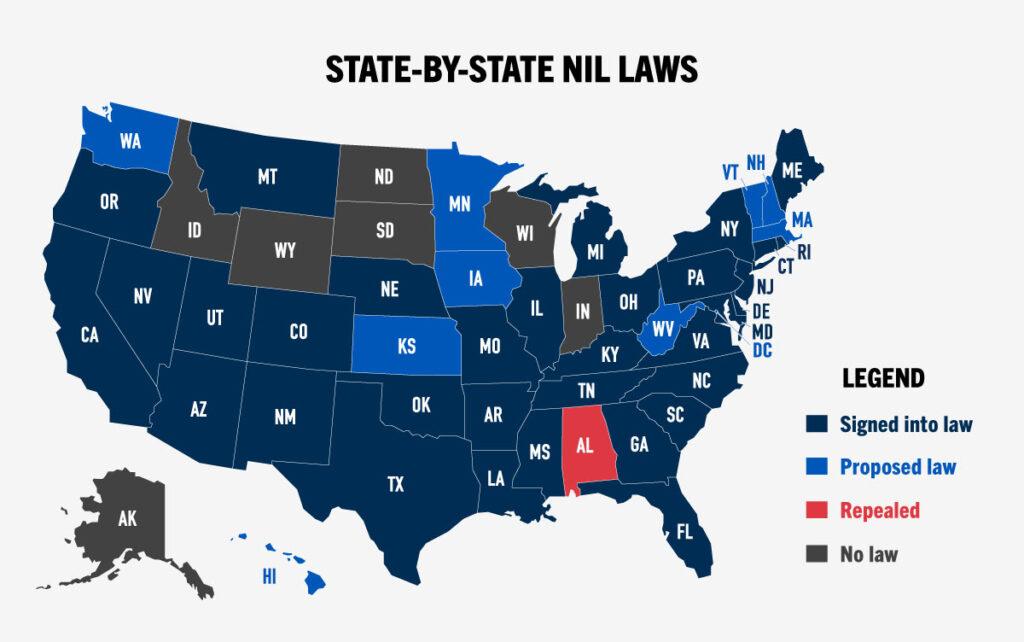President Donald Trump is set to sign an executive order establishing national standards for Name, Image, and Likeness (NIL) rights, marking a significant development amid rapidly evolving legislation on collegiate athlete compensation. The executive action aims to create a uniform framework across states, addressing the current patchwork of NIL regulations and providing greater clarity and consistency for athletes, institutions, and sponsors. This move reflects ongoing federal efforts to keep pace with the expanding NIL market and the growing calls for comprehensive national guidelines.
President Donald Trump Initiates Executive Order to Standardize Name Image Likeness Rights
In a decisive move aimed at unifying the fragmented landscape of Name, Image, and Likeness (NIL) rights across the United States, President Donald Trump is set to sign an executive order that will establish national NIL standards. This initiative arises amid varying state legislations and growing complexities for student-athletes, colleges, and sponsors navigating NIL deals. The executive order seeks to create a consistent regulatory framework to ensure equitable opportunities, protect athlete rights, and streamline endorsement practices on a federal level.
Key features of the proposed standards include:
- Uniform Contract Regulations: Establishing clear guidelines for NIL agreements to reduce legal ambiguities.
- Protection of Athlete Earnings: Safeguards ensuring proper compensation and preventing exploitation in endorsement deals.
- Transparency and Reporting: Mandatory disclosure requirements for NIL transactions to maintain integrity and compliance.
- Educational Resources: Providing student-athletes with tools and support to navigate NIL opportunities responsibly.
| Aspect | Current State | Post-Order Standard |
|---|---|---|
| Contract Enforcement | Varies by state | Uniform federal guidelines |
| Compensation Limits | Undefined or inconsistent | Clear maximum thresholds |
| Disclosure Rules | Minimal regulations | Mandatory public reporting |
| Athlete Support | Limited resources | Federal educational programs |
Implications of Federal NIL Standards for Collegiate Athletes and Institutions
Federal NIL standards promise to unify the diverse and often contradictory state regulations that collegiate athletes currently navigate. This executive order is poised to create a consistent framework, allowing athletes to engage in endorsement deals, sponsorships, and other name, image, and likeness opportunities without the worry of varying state laws. Institutions, meanwhile, will benefit from clear compliance guidelines, reducing the administrative burdens and legal uncertainties that have proliferated alongside disparate state policies.
Key implications include enhanced protections for athletes, such as mandated financial education and standardized contract regulations, ensuring they make informed decisions about lucrative opportunities. Universities will be required to implement transparent reporting systems and coordinate compliance efforts across athletic programs. These changes aim to elevate the professionalism of collegiate sports while balancing commercial interests with athlete welfare.
| Aspect | Federal NIL Standards | Current State Laws |
|---|---|---|
| Contract Uniformity | Standardized nationwide | Varies greatly by state |
| Financial Education | Mandatory for athletes | Optional or inconsistent |
| Institutional Compliance | Centralized guidelines | Decentralized, state-specific |
| Endorsement Opportunities | Expanded scope nationally | Restricted or uneven access |
- Consistency: Athletes gain predictable rules across all states.
- Protection: Increased safeguards in contract negotiations.
- Transparency: Institutions must adopt clearer reporting methods.
- Opportunity: Broader NIL market access nationwide.
Experts Recommend Strategic Compliance Measures Amid Shifting Legislative Landscape
With the impending executive order set to standardize Name, Image, and Likeness (NIL) regulations nationwide, industry experts emphasize the critical need for organizations and athletes to adopt comprehensive compliance strategies. As legislation continues to evolve rapidly across states, stakeholders must prioritize clear policy frameworks that align with the forthcoming federal guidance. Key recommendations include:
- Implementing robust monitoring systems to track NIL engagements across different jurisdictions
- Providing ongoing education to athletes and agents about compliance nuances
- Developing transparent reporting processes to mitigate legal and financial risks
- Engaging legal experts to interpret the executive order’s impact and adapt accordingly
Industry insiders also suggest that collaborative approaches between institutions and governing bodies will be essential to maintain integrity and fairness in NIL activities. To illustrate the varied compliance challenges faced by different entities, consider the following breakdown:
| Entity Type | Primary Compliance Challenge | Recommended Action |
|---|---|---|
| Colleges & Universities | Regulatory consistency | Centralized compliance offices |
| Athletes | Contract disclosure | Mandatory training sessions |
| Sports Agencies | Cross-state regulations | Legal review teams |
The Way Forward
As President Donald Trump prepares to sign an executive order establishing national Name, Image, and Likeness (NIL) standards, the move signals a significant federal intervention amid the rapidly shifting legislative landscape surrounding college athletes’ rights. With state laws varying widely and ongoing debates over fair compensation, the administration’s standardized approach aims to unify regulations and provide clarity nationwide. As this initiative unfolds, stakeholders across collegiate sports will be closely watching how the executive order shapes the future of athlete endorsements and NIL opportunities.





